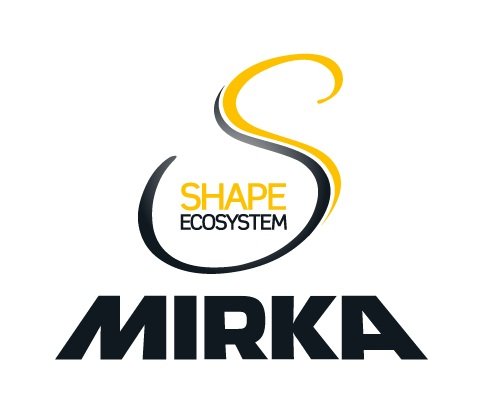The Potential of Ecosystems Shaping the Green Transition
Author: Charlotta Risku, Programme Manager of the SHAPE Ecosystem and General Manager of Innovation and Sustainability at Mirka.
A Global Perspective
We are all painfully aware of the urgent need to adjust our impact to a sustainable level in order to meet the goals of the Paris Agreement, which aims to keep global warming to no more than 1.5°C above pre-industrial levels. This requires a reduction of emissions by 45% by 2030 and reaching net zero by 2050.
The fact is, Earth is currently 1.1°C warmer than it was in the late 1800s, and emissions are still increasing. To underline the urgency of taking action, last autumn, temporarily, planet Earth breached the 2.0 degrees Celsius barrier for the first time. Change is needed now.
Transitioning to a net-zero world is one of the greatest challenges humankind has faced, calling for nothing less than a complete transformation of how we produce, consume, and move about. It will require reinventing value chains, fostering new businesses, and maximizing resource efficiency.
Above all, it will call for radical new collaborations to be formed, both cross-industrial and cross-border.
The Challenge
We represent a conservative branch of industry that largely still operates within linear economy systems, with global linear value chains and a volume product categorized as disposable. Mirka serves a global market - 97% of our production is exported, adding to the challenge. To date, we are not aware of any commercial circular solutions in our market.
There are some recycled raw material alternatives available, but these do not address the challenges, as they are integrated into a linear economy model with no recycling option available, leading to waste being incinerated or ending up in landfills.
Mirka is well-equipped to tackle upcoming challenges as an industry leader with strong R&D capabilities, as well as the will and vision to lead the green transition in our industrial sector.
Mirka has become one of the Locomotive (Veturi) companies, having received significant funding from Business Finland to drive the green transition of the manufacturing industry forward by the creation of SHAPE – a circular economy-based ecosystem.
Being a forerunner is never easy. We need to create visions in areas where none exist yet. Additionally, we need to align with partners, as few companies are fortunate enough to possess the multidisciplinary and global reach required to pursue circular economy initiatives alone. To achieve our goals, we need partners willing to join our quest.
The Potential of Ecosystems
What is an ecosystem? Is it a network of dependencies, mutual interests, and vision? To start, let's consider a definition:
Any complicated system consisting of many different people, processes, activities, etc., especially relating to technology, and the way that they affect each other (Cambridge Dictionary).
Or, in general use, "A complex network or interconnected system."
However, I kind of prefer the traditional approach more. An ecosystem, or ecological system, consists of all the organisms and the physical environment with which they interact. Ecosystems are influenced by both external and internal factors. External factors, such as climate and topography, control the overall structure of an ecosystem but are not themselves influenced by the ecosystem.
Ecosystems are dynamic entities. I suppose the definition of an ecosystem can and should vary depending on its specific purpose, and that there is no need to attempt a compromise. The important thing is that ecosystem members are aware of the purpose of the ecosystem to which they belong.
Having said that, I prefer to view our ecosystem as a kind of seedbed, a foundation for generating ideas, nurturing innovation and commercial potential. An ecosystem should address future market needs, business potential, solutions, and service needs and translate these into a common vision—the purpose.
Our ecosystem already hosts several types of ecosystems, primarily innovation ecosystems focused on specific topics and adjusting value chains towards circularity while seeking future business opportunities
In our context, the ecosystem should serve as an enabler and accelerator, where everyone, like organisms, is responsible for their own interaction, development, and growth, but is supported by the community and fellow members, particularly in the pursuit of a common quest.
Regarding leadership, the role of the ecosystem lead should lean more towards coaching than traditional hierarchical methods. It encompasses thought leadership, vision, and inspiration. To create something disruptive, we must dare to think big and be pioneers.
From Dust to Value
The power of ecosystems and cooperation can truly redefine value chains. One of the core features in the Mirka story is dust-free sanding, but what if the dust waste (that we are efficiently collecting) could be turned into a dust resource?
Dust, as you know, is a challenging substance with many risks in handling and storage, especially in its finer form, often lacking recycling potential.
We kicked off a co-innovation project called Dust to Value, tackling the challenge of wood dust with our brave and adventurous innovation ecosystem, researching the potential of dust for several purposes. In our case, it serves as a substrate, i.e., film-like material and resin-adhesive for fastening the abrasive grains.
Imagine! In the future, our customers use products made from their own waste, thus becoming part of our supply chain. If that is not circular, then what is?
So, if you view the concept of ecosystems merely as a buzzword, I hope this has changed your mind. Transforming value chains into circular ones will amplify the complexity of our networks and necessitate rethinking both product structures and processes. An ecosystem that shares our passion and vision will be invaluable in breaking the linearity and discovering new approaches that enable what is currently considered waste to become a resource.


